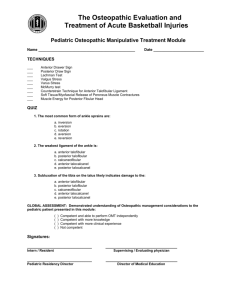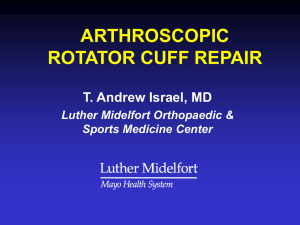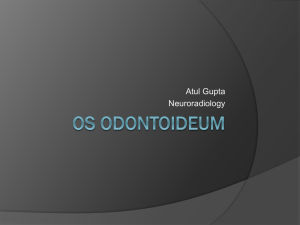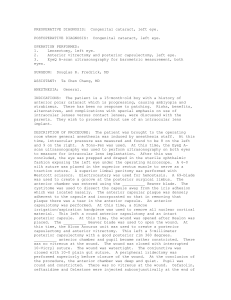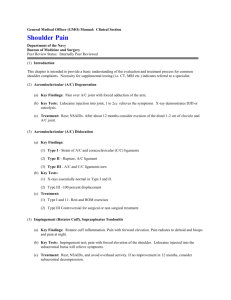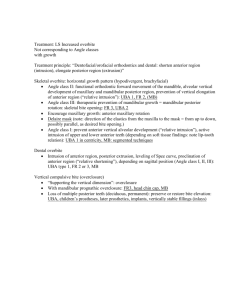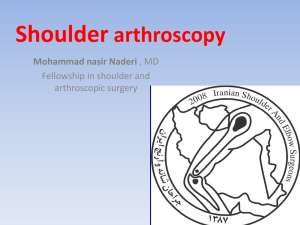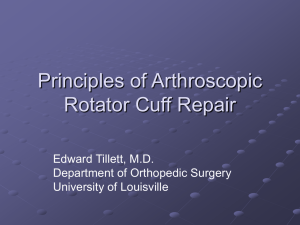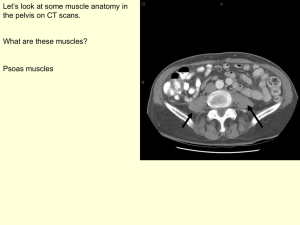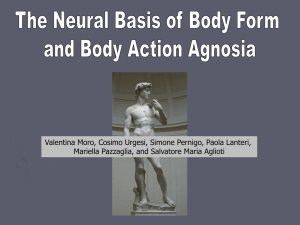Radiology Workshop Extremities
advertisement
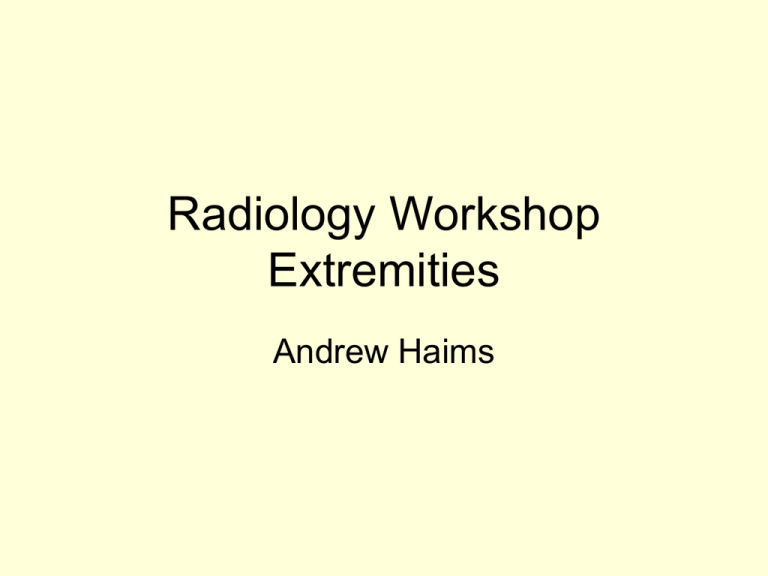
Radiology Workshop Extremities Andrew Haims Case #1 • This is a 35 year old male who fell off a roof and is now complaining of knee pain How would you describe this injury? This is a knee dislocation, click to see the normal orientation of the tibia and the femur What types of injuries do you What is wrong with worry about with knee this angiogram? dislocations? Hint, bony, vascular or ligamentous or meniscal? Vascular is the most concerning and there is almost always ligamentous and meniscal injuries What would you do to evaluate the artery? First examine for a pulse, then possibly an angiogram The popliteal artery is disrupted Let’s take a look at some ligaments, can you point out the normal anterior and posterior cruciate ligaments on these sagittal sequences? Click for arrows PCL ACL Let’s take a look at some more ligaments, can you point out the normal lateral and medial collateral ligaments on these coronal sequences? How about the medial and lateral menisci? Click for arrows Lateral Meniscus Medial Meniscus LCL MCL Let’s now take a look at the anterior and posterior cruciate ligaments in our trauma patient on these consecutive sagittal images. Click for another look at the normals. These are both torn off their femoral attachments ACL stump PCL stump Take a look at our patient’s medial and lateral collateral ligaments. Do you think they look normal? Click for normals The LCL is torn off the fibula and the MCL is torn proximally, click for arrows. MCL disrupted fibers LCL stump Case 2 • 65 year old female with a recent history of fall, now presents with difficulty abducting the arm Can you identify the humerus, glenoid, coracoid process, acromion and clavicle? (click for answers) Humerus Clavicle Acromion Glenoid Coracoid The patient’s physician did not see any abnormalities on her plain radiographs and she did not improve with conservative treatment so she was sent for an MRI to evaluate her rotator cuff. These are coronal images from an MR arthrogram (we put contrast into the shoulder joint). These are consecutive images which image is the most posterior? Hint, where are the AC joint and the long head of the biceps tendon? The left image is the most posterior as the AC joint and bicps are anterior AC biceps Now take a look at the rotator cuff tendons, which one do we see on the posterior image and which one do we see on the mostContrast anterior 2 images? above the cuff tendons Infraspinatus tendon Supraspinatus tendon These are the most common rotator cuff tendons to tear. There is no tear in this patient. Where would you expect to see contrast if there contrast was a tear? Click to see a tear tear What are the other 2 rotator cuff tendons (we already discussed the supraspinatus and infraspinatus tendons? Teres minor and subscapularis tendons, Can you Teres Minor find them on the provided axial images? Subscapularis Subscap=internal rotation By the attachment of these muscles to Teres minor=external rotation the humerus can you determine their function Can you identify the anterior and posterior labrum ANTERIOR Anterior labrum POSTERIOR Posterior labrum Now for the diagnosis: on this is a coronal fatsuppressed T2 weighted image do you see an abnormality? There is extensive edema in the greater tuberosity of the humerus consistent with a nondisplaced fracture. Try and think why this would cause supra and infraspinatus symptoms without a rotator cuff tear The supra and infraspinatus tendons attach to the greater tuberosity Case 3 This is a 27 year old man who fell and has wrist pain. Do you seen an abnormality? There views look normal Can you name the carpal bones? Scaphoid Lunate ? ? Triquetrum Pisiform ? Hamate, do you see ? ? the hook Capitate Trapazoid Trapezium ? ? ? This patient subsequently underwent an MRI of the wrist to evaluate the etiology of his pain. Can you identify the radial and ulnar arteries on these axial sequences. Hint, palpate your own pulses to determine where to look Can you find the median nerve Ulnar artery Radial artery DORSAL Radius Ulna VOLAR A common cause of post-traumatic wrist pain is a tear of the TFCC (triangular fibrocartilage complex). Can you identify the normal TFCC in this patient on this coronal image and anatomic drawing. Now for the diagnosis in this case. This is a coronal fat suppressed T2 weighted sequence. Do you see an abnormality? Hint, look for marrow edema in one of the carpal bones. Which bone is this? This a nondisplaced fracture of the scaphoid This is the most common carpal bone fractured. Click to see a more obvious fracture of the scaphoid on a plain radiograph The End
